Garden application and management and maintenance techniques of Amaryllis

Hippeastrum belongs to the genus Amaryllis of the Amaryllis family, and is mainly a horticultural hybrid variety. The Andes Mountains in Peru and Chile are the origin of Hippeastrum. Hippeastrum was introduced in the 1910s and is distributed in various regions. Among the horticultural hybrids, more than one hundred varieties are popular. This kind of flower has a variety of colors and large flowers. It can be potted for viewing indoors, and can be used to embellish scenic spots and decorate courtyards outdoors to fully improve the landscape effect. The ornamental value of this flower is reflected in the flower stems, leaves, flower colors and other indicators. Its flowers are complex colors, white, orange, crimson, red, etc. The measurement indicators are the beginning of flowering, flower shape, flower color, number of leaves, leaf width, leaf length, number of flower stems, flower stem thickness, flower diameter and single flowering period. At this stage, the cultivation of Hippeastrum is increasing, and it is mainly used for home viewing and flower exhibitions.
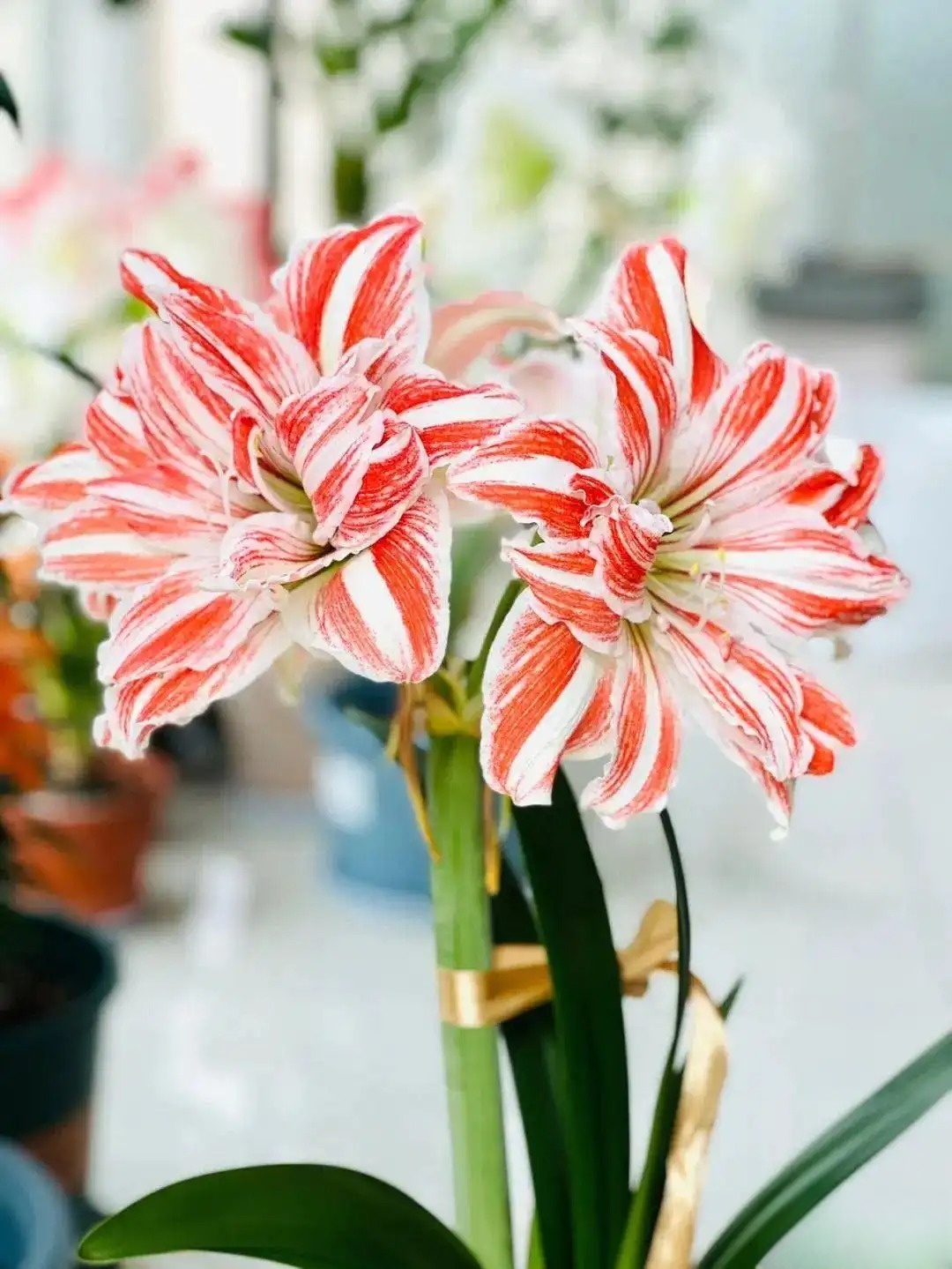


Amaryllis is a perennial herb with an ovoid bulb and modified branches and leaves with a diameter of 5.0 to 7.5 cm and creeping branches. There are generally about 7 leaves, which are alternate. For leaves with severely shortened stems, they are mainly arranged on both sides. Its leaves are relatively slender and have a "V" shape in cross section. The flower stems of this type of flower are hollow, the inflorescence is umbrella-shaped, the number of flowers is more than 2, and they grow diagonally in pairs. The flowers are large and funnel-shaped, and the flowers open horizontally, covering 6 lobes. There is 1 pistil and 6 stamens. The flowering period is about 9 days under the production temperature conditions. The seeds are flat and black in color.
Amaryllis is a tropical flower that likes a moist and warm environment, but not hot or cold. In hot conditions, it grows slowly, and will enter a semi-dormant state when the temperature exceeds 30°C. The dormant period in winter should be kept at 8-12°C. Try to choose sandy soil, ensure that it is fertile and loose, and keep the soil pH at around 6.5.


(A) Home gardening and cut flowers
Combination potted plants, fresh cut flowers and single potted plants are the most common and earliest applications of Amaryllis. The bulb storage temperature should be properly adjusted, stored in a refrigerator at 9°C for 45 days, and then planted. Under this condition, the bulbs can enter the dormant period in advance, effectively ensure the growth of flower buds, and effectively control the flowering time, so that fresh cut flowers can be mass-produced, which has good suitability in home environmental beautification and home gardening.
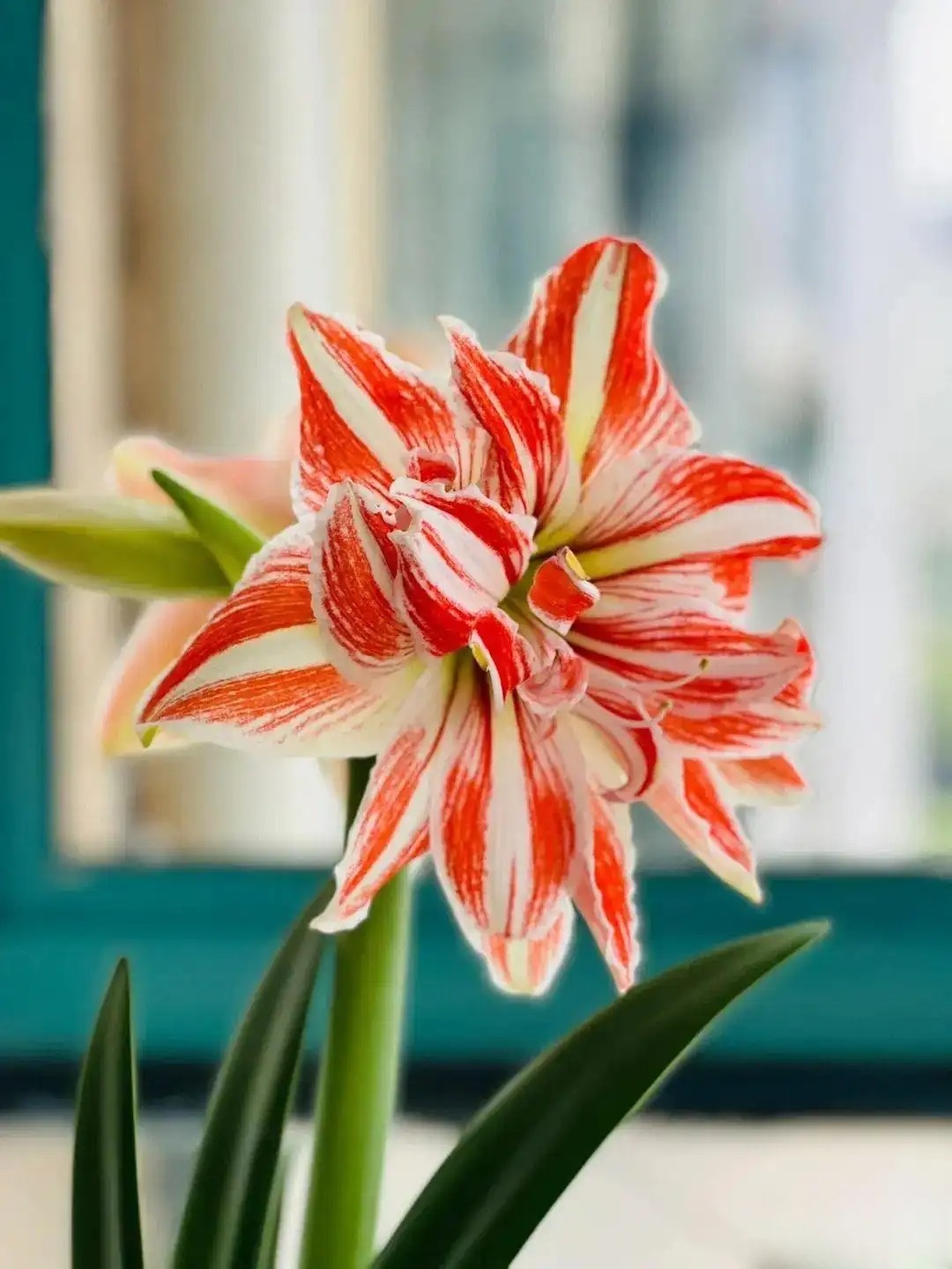
(ii) Flower beds and flower mirrors
The amaryllis has a large corolla, a towering flower stem, a variety of flower colors, rich leaf and flower shapes, and a relatively neat whole plant. It has good applicability in flower bed planting and flower mirror planting. According to the flower shape, amaryllis can be divided into double-petal varieties and single-petal varieties. According to the color, amaryllis can be divided into white-bottomed pink-edged, variegated, rose-red, green, yellow, white, pink, bright red, and white-bottomed red-edged types. Therefore, various leaf shapes, flower shapes, and flower colors can be planted in flower beds in combination or individually, and they also have good adaptability in flower border construction. For example, the construction of an amaryllis specialty garden has outstanding ornamental value, and can also promote the development of tourism and the construction of germplasm resource banks. For garden engineering, in garden design, separate spaces are generally set in each area to form various forms of flower beds, making the space more substantial. Plant the amaryllis with lush and neat flowering and high consistency in the flower bed, and use the flower bed to regularize the planting bed to decorate and display the colorful planting groups. At the same time, the green leaves of Amaryllis are relatively thick, which can effectively absorb mercury, sulfur, fluorine, chlorine and other toxic substances, and can ensure that the surrounding environment is effectively optimized.
(III) Landscape stones and nearby water areas
In garden design, real scene design and waterscape design are key contents, which have an important impact on garden scenery. Because the scenery has poetic and picturesque characteristics, it is deeply favored by garden designers. By transforming natural waters and piling up stone scenery, the beautiful scenery of mountains and rivers is created to provide people with a place to play. It is also a common landscaping method to decorate the ground cover plants near the landscape stones and nearby waters. Planting large areas of amaryllis near the landscape stones, and coordinating with the lawn to establish a small landscape of plant landscape stones, which can be arranged at will and is more coordinated with the environment. It has the effect of adding scenery to the garden landscape design. At the same time, the landscape stones and plants can form a strong contrast, which brings people the enjoyment of beauty and natural wildness from a visual perspective.
(IV) Ground Cover
Amaryllis lacks tolerance for waterlogging. During planting, it is well suited for gentle slopes and other micro-topography areas, and can be displayed in irregular or regular shapes. The row spacing is kept at about 20 cm to ensure that the planting density is reasonable, which can fully enhance the display effect and prevent the soil from being exposed during the leaf period. Amaryllis has good adaptability and stress resistance, and is a good ground cover plant in the garden. Its leaves are elegant and its flowers are outstanding. You can enjoy the leaves or the flowers. Large-scale planting, matching planting, cluster planting and solitary planting all have good planting effects. It has a rich application form and a broad application prospect.
(V) Hedge
The height of Amaryllis is generally between 50 and 80 cm. It can be used as a hedge in grasslands and roadsides. It can be combined with other plants or planted alone. In March and April, it can be turned into a flower hedge for people to enjoy. In other stages, it can be used as a foliage plant. At the same time, the hedge has the functions of noise and dust prevention, covering bad viewpoints, viewing, and isolation and protection.
(VI) Flower Exhibition
Parks can choose pink, yellow, red and other colors of amaryllis to match them, which can create a good atmosphere and fully enhance the attractiveness of the park landscape. At the same time, the amaryllis flower belt can be constructed with the help of auspicious cloud shapes to fully demonstrate the yearning for a better life. Relevant practices have proved that it is feasible to use amaryllis for flower exhibitions.
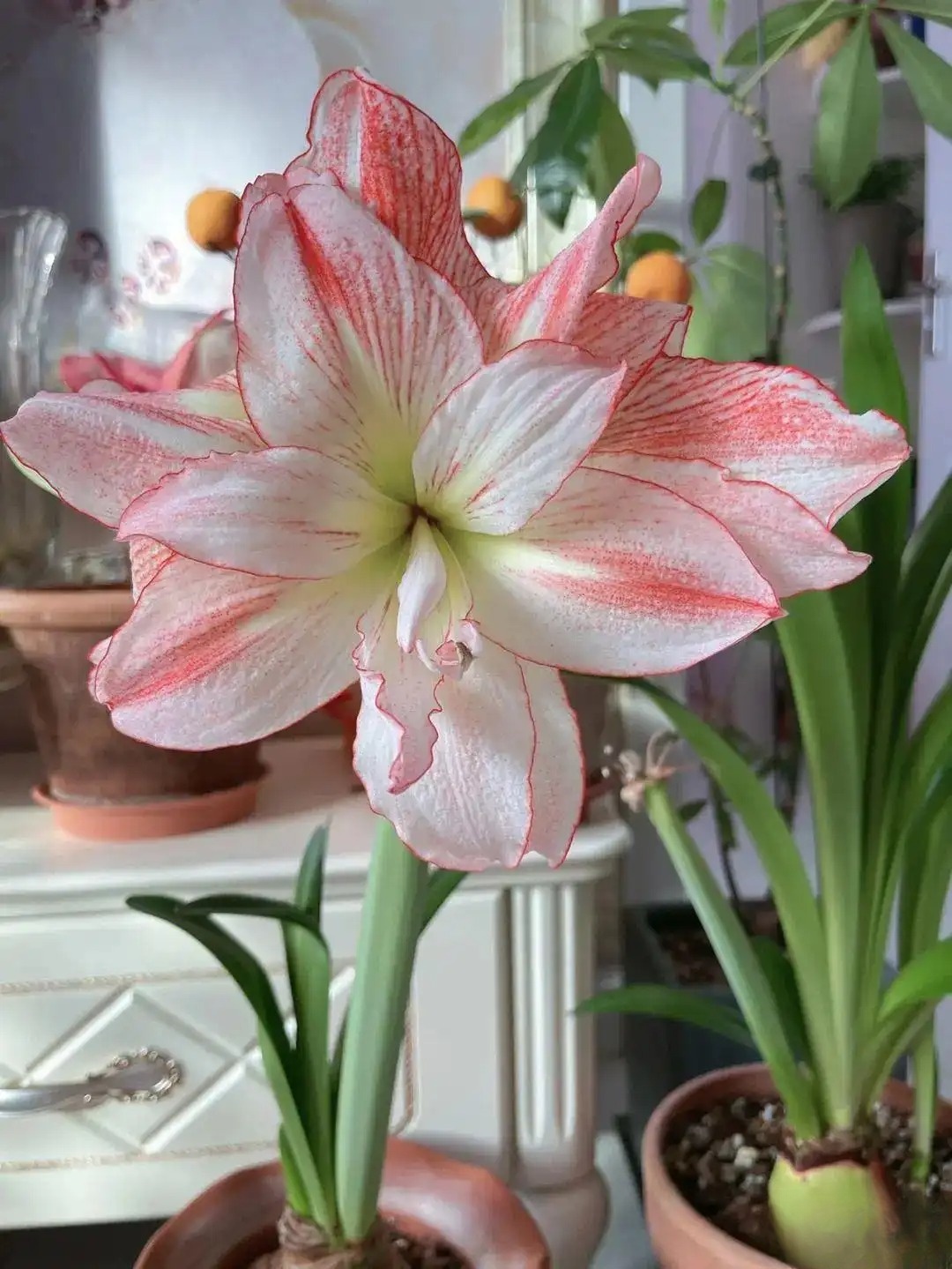


(I) Tissue reproduction
This method of reproduction has abundant raw materials, such as small bulbs, tender flower organs, etc. At this stage, varieties such as White Rib, Double Dragon and Cherry Neve have been cultivated. Callus tissue can be cultivated using tender flower organs, and then differentiation treatment is performed to obtain tissue culture seedlings. This method has certain defects, that is, callus tissue cannot be produced efficiently and it is difficult to fully induce differentiation. At this stage, small bulbs are mainly selected for tissue culture. With the help of the undifferentiated buds in the bulb position, after cutting, they are cut into tissue culture medium. Based on the tissue culture environment, it has good cleanliness and will not contaminate the induced new plants. Tissue culture seedlings can be generated within 30 days, without the need for callus tissue and induced differentiation treatment. Tissue culture seedlings can be continuously divided and proliferated.
This can significantly reduce production cycle time.
(ii) Bulb cutting
The bulbs of Amaryllis contain undifferentiated buds and have a strong ability to divide, so bulb cutting is a common method of propagation. For cuttings, sterilized peat or vermiculite is selected, the aged epidermis of the bulbs is peeled off, the surface debris is cleaned with detergent water, and then rinsed with tap water, then disinfected with 75% alcohol, and finally cleaned with distilled water.
After completing the above operations, use a scalpel to cut along the bulb disk, with a width of 1 cm. The end of the scale should carry the bulb base, and then place it in the culture medium, keeping the burial depth at about 2 cm, choose 1% carbendazim for spraying, and spray distilled water regularly to ensure that the humidity of the culture medium will not change. New seedlings will be able to emerge after 20 days, and the requirements for transplanting will be met after 60 days.
(III) Seed propagation
This method is sowing. Based on natural environmental conditions, Amaryllis can use airflow to achieve pollination, and can also use artificial methods to carry out breeding operations. After the seeds are mature, sowing operations can be carried out. Long-term storage of seeds is prohibited to fully ensure the vitality of the seeds. This type of flower has a large amount of seeds, a good germination rate, and is very easy to survive. This method of reproduction is easy to operate and low in cost. However, because the varieties on the market are generally hybrid varieties, the breeding work lacks stability. At the same time, this type of flower has a strong asexual reproduction ability, so it is generally produced by asexual reproduction.
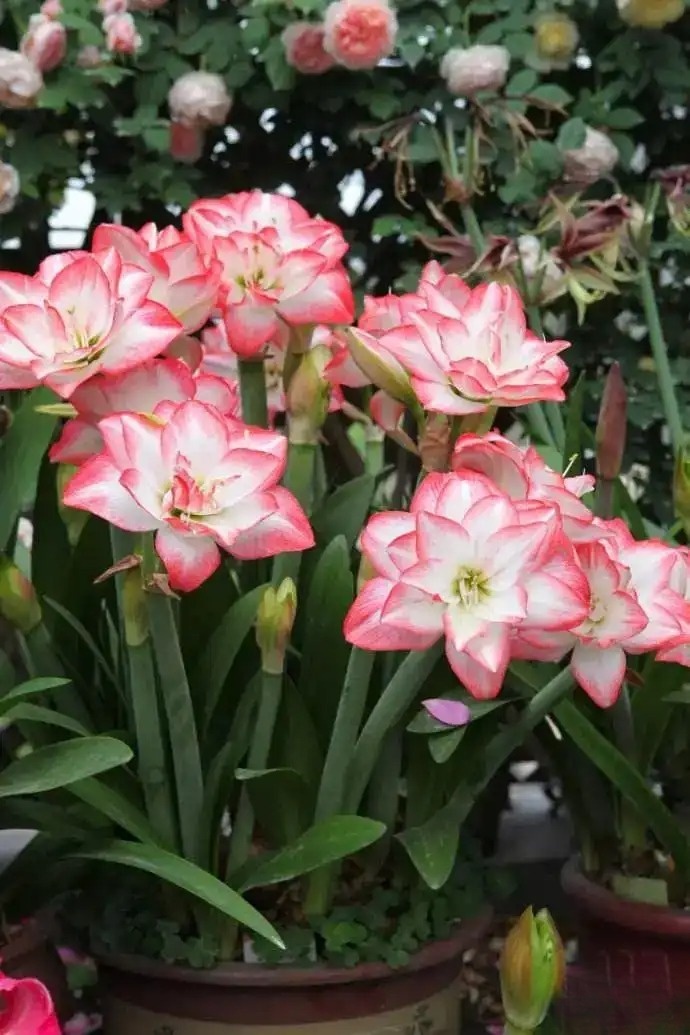


(I) Rationally select the seedling hardening medium
For tissue culture and bulb cutting seedlings, because there are differences in expression between the seedling raising environment and the actual planting environment, joint seedling treatment is generally required. It is necessary to study various formula substrates, select rooted seedlings with no significant differences in growth and transplant them in various cultivation substrates, select river sand, perlite, garden soil, and vermiculite substrate formulas for transplanting and planting, and compare and select the seedling hardening substrate. Because the inert substrate has a stable nature, there will be no serious alkalinity or acidity problems, which can ensure that the pH value of the cultivation environment does not change.
(II) Improve the planting matrix
Amaryllis prefers loose, fertile sandy soil. By mixing potassium polyacrylate, peanut bran, cow dung, bagasse, mushroom residue, vermiculite, peat soil, perlite, etc. according to a certain mass ratio, a special mechanism for Amaryllis bulbs can be obtained, and a comparative analysis is carried out with conventional seedling medium. The first type is a special medium for Amaryllis bulbs. The second type is a medium with a mass ratio of vermiculite, perlite, and peat soil of 1:1:2. The third type is a medium with a mass ratio of 1:3 of decomposed chicken manure and garden soil. The final results show that the first matrix has a more prominent effect on the growth of bulb quantity, leaf size, and resistance to leaf spot disease.
(III) Timely transplanting
By analyzing the survival rate of transplantation in each season, it was found that the survival rate of transplantation in spring was 43.4%, the survival rate of transplantation in summer was 29.5%, the survival rate of transplantation in autumn was 39.3%, and the survival rate of transplantation in winter was 80.1%. The main reason is that during the transplantation of tissue culture seedlings, it is necessary to avoid high temperature exposure and rainy seasons, and it is also necessary to avoid exposure within 1 week after transplantation. By investigating the survival rate under no shading and shading conditions after transplantation, an investigation was carried out. In spring, summer and autumn, sheds need to be built and shaded one week before the transplantation of tissue culture seedlings to prevent high temperature from burning the seedlings. The shade net can be removed after 1 week. Based on the greenhouse cultivation conditions, there is more rainfall from March to May. After the vermiculite is laid in the field, the small arch shed is built. The small arch shed will be removed after June. Through relevant practice, it is found that the small arch shed has a good rain shelter effect in the rainy season, preventing rain from leaching the substrate and fully ensuring that the water and fertilizer effect will not be affected.


(I) Bulb processing
In the cultivation of amaryllis, bulb disinfection is an important link. Usually, 600 times the solution of thiophanate-methyl, thiophanate-methyl and carbendazim is used for disinfection. Remove the dead leaves and rotten roots of dormant bulbs, retain the strong roots, leave 2cm of bulbs, and trim the upper part of the bulbs. Peel off the outer black skin, let the white and green leak out, and then soak them in disinfectant for 5 minutes. Then wash them with clean water and soak them in room temperature water for 1 day. After the bulbs are completely absorbed, they can be dried in the shade for later use. Relevant practice shows that vermiculite substrate has the best effect, and the survival rate of cultivating small bulbs exceeds 90%. The second is garden soil, perlite and river sand.
(II) Planting
Before planting, compound fertilizers such as cake fertilizer, chicken manure, and organic fertilizers should be used as base fertilizers, and then the disinfected substrate should be added. During the cultivation process, the root position should be ensured not to be damaged. When the bulbs are just planted, half of the bulbs need to be exposed, and then the cultivation substrate should be compacted and watered thoroughly. The status of the bulbs should be checked regularly, mainly because the bulbs often rot at this time. After the bulbs grow roots and leaves, the bulbs should be covered with the substrate for external treatment.
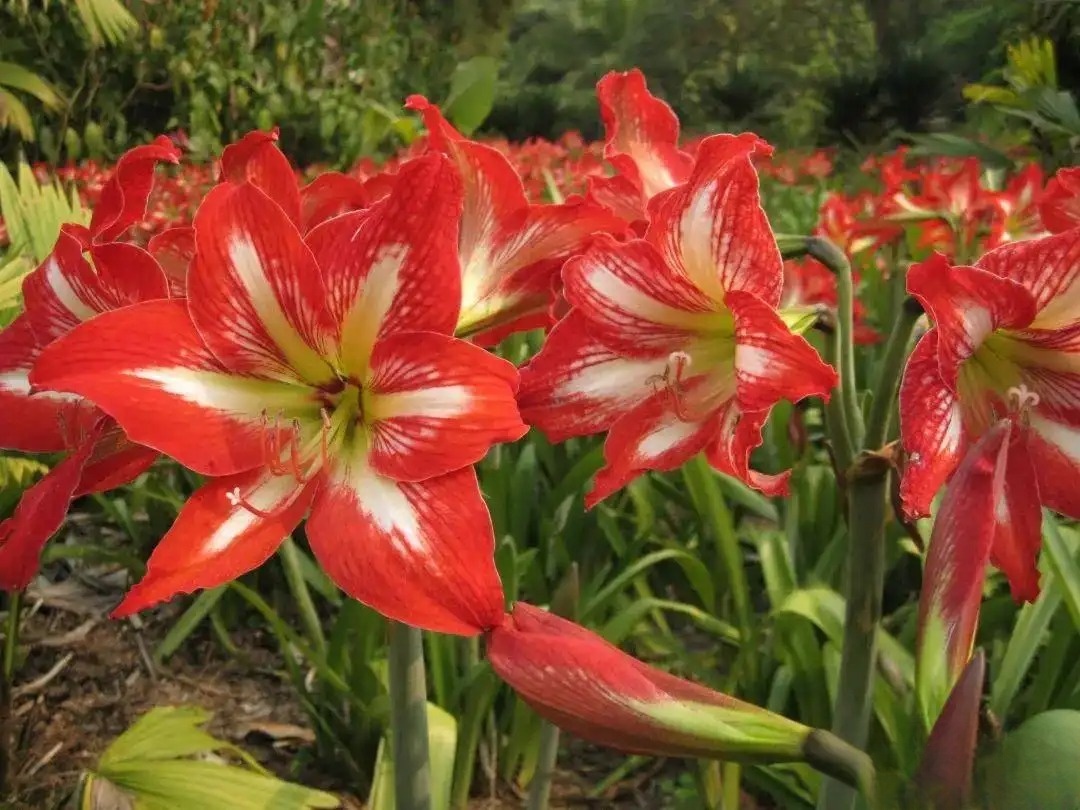
(III) Temperature management
Amaryllis is a winter and spring flowering flower that is not cold-resistant. It should maintain a moist and warm environment throughout the growing period. The cultivation temperature should be kept within the range of 15 to 25°C, and the suitable growth temperature is within the range of 20 to 21°C.
For newly planted bulbs, they should be kept in a dry condition within the range of 14-15℃ and kept in a ventilated and cool condition for about 2 weeks, which can promote the development of the root system and provide a basic guarantee for the later leafing and flowering. After 2 weeks, the bulbs will grow buds and leaves. At this time, the air temperature should be kept within the range of 65%-80%, and the temperature should be kept within the range of 18-25℃.
Amaryllis prefers a humid and warm environment. The air humidity should be sufficient during the growing period. If the air is dry, it is necessary to spray water regularly to increase the humidity.
(IV) Lighting management
This kind of flower likes light, especially in the winter production process, you should ensure sufficient light. If it is cloudy and rainy for a long time, you should carry out supplementary lighting. Mercury lamps and metal sodium lamps are the most widely used. Among them, sodium lamps are closer to sunlight, can emit ultraviolet rays and increase light intensity.
After planting, placing it in a dark location can promote rooting. It will start to sprout after 2 weeks. Continuously increase the light intensity, and then the flower arrows can be smoothly pulled out through direct sunlight.
(V) Water and fertilizer management
Try not to water when you first plant it, and water it after the leaves reach 10cm in length. The general rule is as follows: water less in the early stage, water appropriately before flowering, water enough during the flowering period, and keep it moist. April to September is the growth period of Amaryllis. At this stage, Amaryllis likes fertilizer and water but avoids waterlogging. It is necessary to actively carry out water and fertilizer management, and reasonably apply decomposed sesame paste residue water, with a frequency of 1 time/10 days.
Nitrogen fertilizer needs to be applied in the seedling stage, and potassium fertilizer and phosphorus fertilizer are mainly applied in the middle and late stages of the growth of Amaryllis to fully ensure the growth of the bulbs and prevent them from growing too tall. After September, the leaves turn yellow and dry. At this time, it is necessary to effectively control water and fertilizer and scientifically apply light. Amaryllis has winter dormancy characteristics. After October, the bulbs should be taken out and soaked in 40℃ clean water for 60 minutes to avoid diseases during the storage period. After drying, they can be stored in sand.
(VI) Pest and disease control
1. Diseases. Root rot. Root rot will first infect the bulb and cause soft rot. The diseased part will become mushy due to ulceration, which will cause soft rot in the plants during storage. The following methods can be used for prevention: After the bulbs are infected with root rot, cut off the leaves and soak them with 1000 times dilution of oxadipamide for 10 minutes, and then plant them in a new area. Dig up the soil in the diseased area and disinfect it. Use 40% root rot net 400 times dilution or 5% carbendazim wettable powder 4000 times dilution to spray on the soil in the planting area and on the plants, and spray twice continuously, with a frequency of once every 10 days. Mosaic disease. After the leaves of Amaryllis are infected, they will turn green, forming strips and blocks of spots with different depths. It seriously affects the growth of Amaryllis, the leaves become deformed, and the bulbs and flowers continue to shrink. After the disease occurs, you can choose to spray 2000 times of 16% acetoxystrobin suspension and 1000 times of 56% amicolide in the soil of the planting area and on the plants, and spray once continuously, with a frequency of once every 10 days. After the mosaic disease is discovered, when carrying out daily management work, cut off the leaves in the area 14 days after flowering, and spray at the same time to avoid the seasonal spread of mosaic disease. Red spot disease. When the disease just occurs, red spots appear in the bulbs and leaves, which can develop into stripes and oval patches in the later stage, and the color is reddish brown. After the disease occurs, you can spray 600 times of 80% mancozeb and 700 times of 75% thiophanate-methyl wettable powder to prevent the spread of the disease.
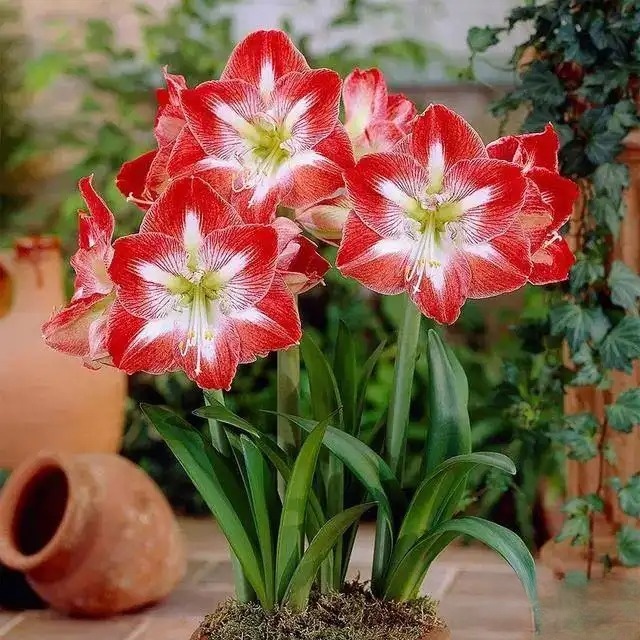
2. Pests. The first is the Spodoptera litura. The larvae eat flowers and leaves, leaving holes. The larvae usually live in the curled position of the leaves. You can choose 2000 times of 1.8% avermectin emulsifiable concentrate and 1000 times of 4.5% highly effective cypermethrin for prevention and control, spray twice continuously, once every 10 days. The second is snails. If snails reproduce in large numbers in the planting area, they will seriously eat the leaves of Amaryllis, causing gaps in the leaves. Applying MetDa near the plants can achieve the prevention and control goals. The third is the Allium orchid moth. After the larvae eat the leaves, the leaves will curl and rot. After the curled position is opened, the moth larvae can be found. When carrying out prevention and control operations, choose 1000 times of 4.5% highly effective cypermethrin for prevention and control, spray twice continuously, once every 10 days.